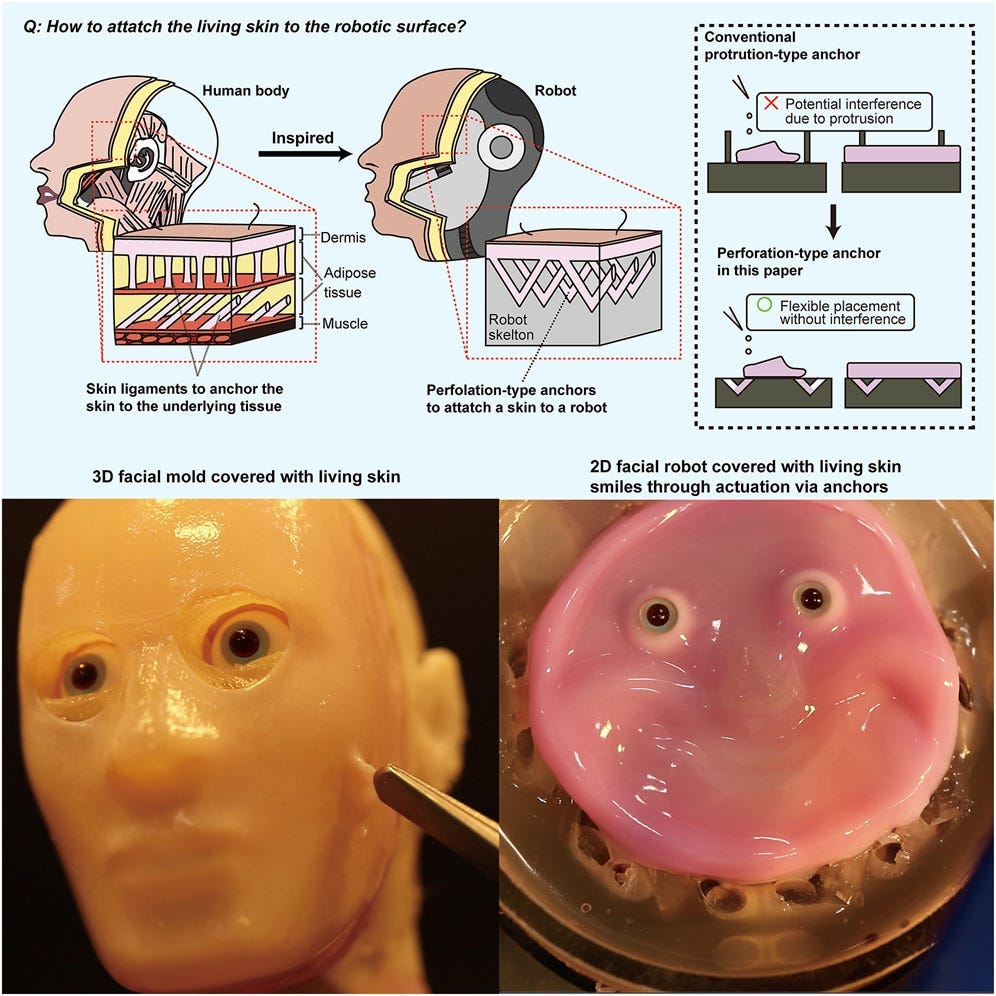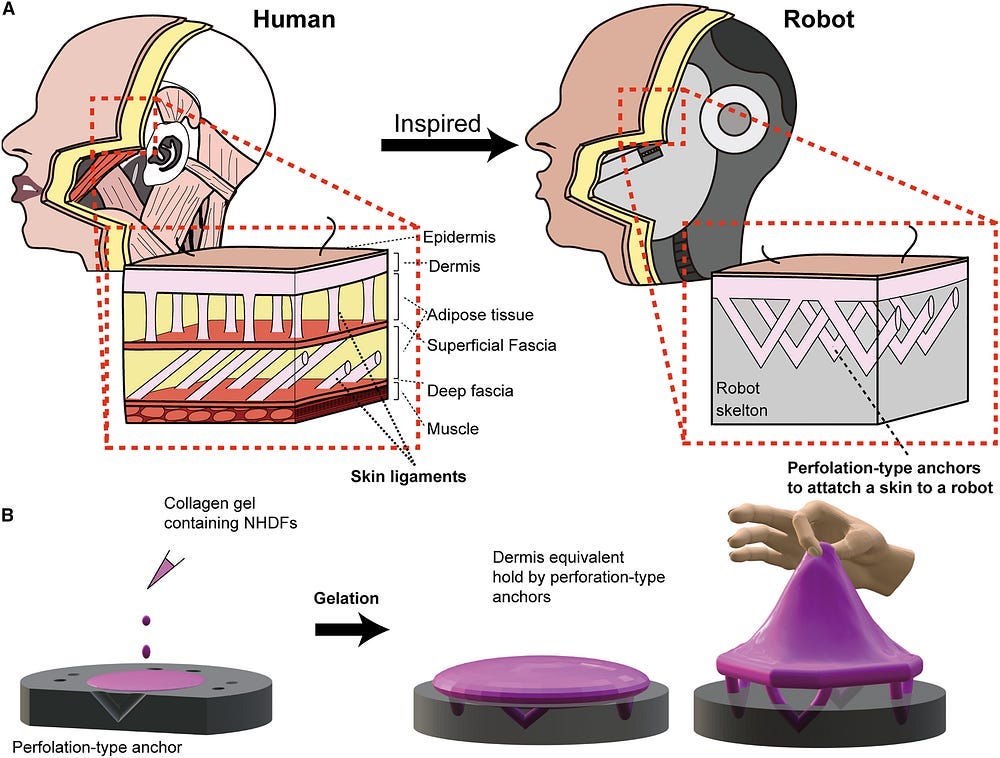Japanese Scientists Puts 'Living' Human Skin On A Robot Face
The living skin can self heal when cut and protects the humanoid face from external damages.
In a groundbreaking development that blurs the line between human and machine, researchers at the University of Tokyo have successfully created a robot face covered in living human skin.
I’ve seen some incredible innovations in both AI and robotics over the past several months from big players like Nvidia and Tesla, but humanoids with real skin tissue? That’s on a whole new level of creepy and terrifying.
Human Skin on Robots: The Approach
The research team, led by Professor Shoji Takeuchi, has developed a method to attach living skin tissue to a robotic framework, allowing the creation of a robot face capable of mimicking human expressions, including smiling.
This achievement builds upon years of work with lab-made human skin and addresses previous challenges in adhering living tissue to mechanical structures.
The key innovation lies in the team’s approach to binding the skin to the robot’s surface. Inspired by human skin ligaments, they created a system of “perforation-type anchors” — tiny V-shaped cavities on the robot’s surface that are filled with a collagen gel containing cultured dermal fibroblasts.
This method allows the skin to move seamlessly with the robot’s underlying structure, much like human skin moves over muscle and bone.
This is the actual setup for the robotic face actuation.
Keep reading with a 7-day free trial
Subscribe to Generative AI Publication to keep reading this post and get 7 days of free access to the full post archives.




